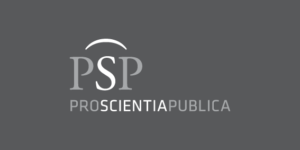Experimental Verification of the Reading Comprehension Intervention for the German Language as L3
DOI:
https://doi.org/10.15503/jecs2022.2.369.382Keywords:
second foreign language, reading comprehension, interventionAbstract
Aim. The main aim of the research was to verify the reading comprehension intervention program for the German language that builds on complex models of foreign language text comprehension while stimulating the cognitive, affective and social levels of reading.
Methods. The respondents of the research were studying English language in their 3rd year in secondary schools in Slovakia. The data were collected with the didactic reading comprehension test for the German language (Hockicková et al., 2020). The research was conducted through a pre-test before the intervention program and a post-test after the intervention. The basic characteristics of the examined variables were described using descriptive statistics. A paired t-test was used to detect differences in reading comprehension before and after the intervention.
Results. The results of the research confirmed an increase in German texts comprehension in each experimental group. A statistically significant difference in reading comprehension performance was not confirmed in the control groups without completing the intervention program.
Conclusion. The reading comprehension intervention program for the German language at A2 level appears to be effective in the direction of increasing performance in reading comprehension of German texts. The intervention in German text comprehension is manifested in two simultaneous work practices, namely in the development of predictors and in working with different types of texts as well as different reading strategies.
Downloads
References
Azizi, M., Tkáčová, H., Pavlíková, M., & Jenisová, Z. (2020). Extensive Reading and the Writing Ability of EFL Learners: The Effect of Group Work European. Journal of Contemporary Education, 9(4), 726-739.
Cibáková, D. (2012). Jazyk a kognícia v rozvíjaní porozumenia textu u žiaka primárnej školy [Language and cognition in the development of primary school pupil’s reading comprehension]. Prešovská Univerzita v Prešove.
Crain, S., & Shankweiler, D. (1988). Language Mechanisms and Reading Disorder: A Modular Approach. Cognition, 24(1-2), 139-168.
Čáp, J., & Mareš, J. (2001). Psychologie pro učitele [Psychology for teachers]. Portál. Special Eurobarometer 386. (2012). Europeans and their Languages. https://op.europa.eu/en/publication-detail/-/publication/f551bd64-8615-4781-9be1-c592217dad83#
Fabricius-Hansen, C. (2002). Texte in der Fremdsprache lesen und verstehen: Überlegungen zu einem vernachlässigten Thema. Report of the project Languages in Contrast, 16, 1-17.
Gadušová, Z., Pavlíková, M., & Havettová, R. (2021). Intervention in Teaching Reading in a Foreign Language: Development of Divergent Thinking and Ambiguity Tolerance. Journal of Education Culture and Society, 12(1), 297-313. 10.15503/jecs2021.1.297.313.
Gavora, P. (1986). Žiak a porozumenie textu [Pupil and reading comprehension]. Pedagogika, 36(3), 297-312.
Gavora, P. (1992). Žiak a text [Pupil and text]. Slovenské Pedagogické Nakladateľstvo.
Gavora, P., Manniová, J., Mihálechová, M., Tamášová, V., & Tóthová, R. (2008). Ako rozvíjať porozumenie textu u žiaka. Príručka pre učiteľa [How to develop pupil’s reading comprehension. A teacher‘s guide]. ENIGMA.
Hockicková, B., Stranovská, E., Szabó, E., Ficzere A., Stančeková, S., & Weiss, E. (2020). Intervenčný program čítania s porozumením pre nemecký jazyk, úroveň A2 [Reading comprehension intervention programme for German, level A2]. Verbum.
Khonamri, F., Pavlíková, M., Falahati, F., & Petrikovičová, L. (2020). Investigating the Co- development of Reading Fluency and Reading Comprehension through Mindful Teaching of Collocations in EFL Classroom. Science for Education Today, 10(3), 7-27.
Khonamri, F., Králik, R., Vítečková, M., & Petrikovičová, L. (2021). Self-Assessment and EFL Literature Students’ Oral Reproduction of Short Stories. European Journal of Contemporary Education, 10(1), 77-88.
Khonamri, F., Hashemi, E., Pavlíková, M., & Petrášová, B. (2021). Coherence Problems of EFL Students' Writing in Light of the Gricean Maxims. Journal of Education Culture and Society, 12(2), 294-313. https://doi.org/10.15503/jecs2021.2.294.313
Lalinská, M. (2020). Meranie čítania s porozumením v druhom cudzom jazyku [Measuring reading comprehension in a second foreign language]. Verbum.
León, J. A., & Escudero, I. (2017). Reading Comprehension in Educational Settings. Studies in Written Language and Literacy 16. John Benjamins Publishing Company.
Liptáková, Ľ., & Cibáková, D. (2013). Edukačný model rozvíjania porozumenia textu v primárnom vzdelávaní [An educational model for developing reading comprehension in primary education]. Prešovská Univerzita v Prešove.
Lovašová, S., & Balogová, B. (2018). Kváziexperiment v sociálnej práci [Quasi-experiment in social work]. In B. Balogová, & H. Hamadej (Eds.), Aktuálne oblasti spoločenskovedného výskumu [Current areas of social science research] (pp. 8-17). Prešovská Univerzita v Prešove.
Meireles, S. M. (2006). Leseverstehen aus der Perspektive des Nicht-Muttersprachlers. In D. Blühdorn, H. Breindl, & E. Waßner (Eds.), Text-Verstehen. Grammatik und darüber hinaus (pp. 299-314). de Gruyter.
Meng, M. (1998). Kognitive Sprachverarbeitung. Rekonstruktion syntaktischer Strukturen beim Lesen. Deutscher Universitäts-Verlag.
Nassaji, H. (2003). L2 Vocabulary Learning from Context: Strategies, Knowledge Sources, and their Relationship with Success in L2 Lexical Inferencing. TESOL Quarterly, 37(4), 645-670.
Radulović, B., Jovanović, T., Gadušová, Z., Hašková, A., & Pavera, L. (2022). Mentor’s Perception of the Future Science Teacher’s Teaching Practice. Journal of Education Culture and Society, 13(1), 24-31.
Rayner, K. (1998). Eye Movements in Reading and Information Processing: 20 Years of Research. Psychological Bulletin, 124(3), 372-422.
Roubalová, M., Králik, R., & Kondrla, P. (2021). Importance and Method of Teaching Biblical Hebrew and Aramaic in Religious Education of Children and Adults. Journal of Education Culture and Society, 12(1), 59-67. 10.15503/jecs2021.1.59.67
Schwarzová, M. (2009). Úvod do kognitivní lingvistiky [Introduction to Cognitive Linguistics]. Dauphin.
Solmecke, G. (1993). Texte hören, lesen und verstehen. Langenscheidt.
Sternberg, R. J. (2002). Kognitivní psychologie [Cognitive psychology]. Portál.
Stranovská, E., & Ficzere, A. (2020). Intervencia a prediktory čítania s porozumením [Reading comprehension intervention and predictors]. Verbum.
Stranovská, E., Ficzere, A., & Gadušová, Z. (2020). Cognitive Structure and Foreign Language Reading Comprehension. INTED 2020: 14th Annual International Technology, Education and Development Conference, 5010-5016. 10.21125/inted.2020.1369
Szabó, E., & Sokol, A. (2021). Úroveň porozumenia cudzojazyčných textov a kognitívny proces [The level of comprehension of foreign language texts and the cognitive process]. Cudzie jazyky v premenách času 11, 350-358.
Walker, C. H., & Meyer Bonnie, J. F. (1980). Integrating Information from Text. Review of
Educational Research, 50(3), 421-437.
Willingham, D. T. (2017). The Reading Mind: A Cognitive Approach to Understanding How
the Mind Reads. Jossey-Bass.
Wolff, D. (1996). Kognitionspsychologische Grundlagen neuer Ansätze in der Fremdsprachendidaktik. Info-DaF, 23(5), 541-560.
Downloads
Published
Issue
Section
License
Copyright (c) 2022 Erzsébet Szabó, Eva Stranovská, Anikó Ficzere

This work is licensed under a Creative Commons Attribution 4.0 International License.
CC-BY
Authors retain copyright and grant the journal right of first publication with the work simultaneously licensed under a Creative Commons Attribution License that allows others to share the work with an acknowledgement of the work's authorship and initial publication in this journal. All authors agree for publishing their email adresses, affiliations and short bio statements with their articles during the submission process.


